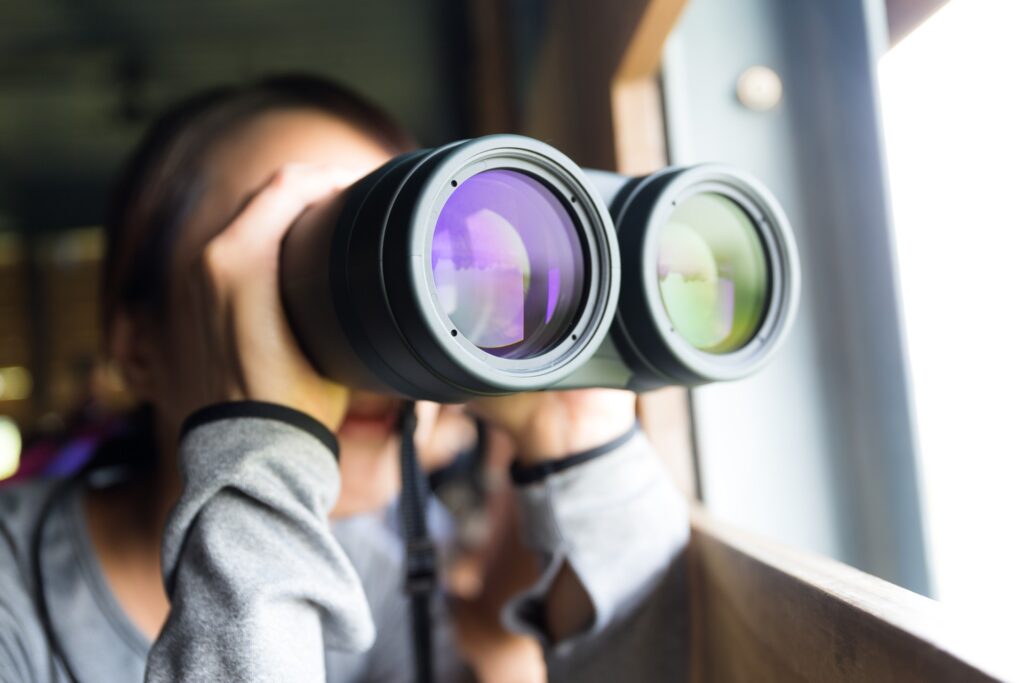Seeing In the Dark: A Guide

As much as many moms use it to encourage their kids to eat carrots, they won’t help you see in the dark. They’re great for keeping your eyes in good health, but it’s still not going to be easy to see when you’re outside at night. Instead, there are other options for those who need to be able to see what’s going on with the lights out. Whether you’re ready for an adventure outside, a hunter, or in law enforcement, thermal imaging or night vision may be essential.
Thermal Versus Night Vision
Two main types of ATN Optics available today are thermal imaging and night vision. While they’re both incredibly useful for being able to see in the dark, they are very different and one might be better for certain scenarios than the other. It’s important to understand the differences to make sure you get the right one for your needs.
Thermal imaging does not require any light. It detects heat instead of using small amounts of light to allow you to see. A screen is needed to view the imaging as it’s created by sensors and it is important to know how to read the images. Traditionally, they use black and white to show the temperature differences. The lighter the color is, the hotter the object is. When you’re looking around through a thermal imager, it’s possible to see humans, animals, and other objects that produce heat. It’s harder to see some animals like snakes because their temperature adapts to the environment, helping them blend in when you’re looking at temperatures. Thermal imaging can be used in the light or the dark, making it incredibly useful in a wide range of applications.
Night vision does require some light to work, but the light needed is incredibly minimal. It can use the light from the moon or stars to magnify it and create the visibly green images you may have seen in TV shows or video games that use it. Though night vision does require minimal light to work, it does become less effective the more light there is in the area. Night vision is not usable during the day because there is too much light. It is found in goggles, scopes, cameras, and a lot more to make viewing things at night easier.
When to Use Them
Both thermal imaging and night vision are incredibly useful in a wide range of applications. They’re often used outdoors by those who enjoy camping, hunters, law enforcement personnel, and those who want to prep for emergency situations. Purchasing these devices can be done by anyone, though there are some groups of people who will find them more useful than most. Some of the most common reasons people purchase thermal imaging cameras or night vision include the following.

Outdoor Adventures
Those who enjoy the outdoors will often take trips that keep them outside at night. They may enjoy camping, longer hikes where they can be out after dark or other outdoor adventures. While someone’s eyes can adjust somewhat to the dark, it can still be difficult to see. Lights like lanterns or flashlights may not be desirable, as they can scare away wildlife and detract from the ability to see the stars. Instead, night vision allows outdoor enthusiasts to be able to see what’s around them even in the dark, keeping them safe during the night and allowing them to view anything that may be nearby. Most outdoor enthusiasts will prefer night vision over thermal imaging due to the cost difference and the clarity of what they can see with goggles or other devices.
Law Enforcement
Law enforcement agencies often use thermal imaging to capture those who are wanted. If someone is hiding outdoors or in a building, thermal imaging can be used to detect where the person is located. Since it can see the heat from a person, it is possible to look around in an area and find out where someone may be hiding. Law enforcement agencies may also use night vision when they need to enter somewhere it will be dark or if they’re searching at night for something that won’t give off heat. Both types of devices can be incredibly useful depending on the desired application.
Hunting
Hunters won’t want to use flashlights or lamps, as they’ll end up scaring away the wildlife they want to catch. Instead, they may use thermal imaging or night vision to be able to see what’s going on around them in the dark. Scopes that can fit on a rifle are often desirable, as they make it easier to aim at night when it can be more difficult to see the wildlife. Hunters will want to choose the right device based on their specific situation, what they’re hunting, and how much light there is when they’re out at night.
Survival Prep
Those who want to prep for potential survival situations they could experience may want to consider purchasing devices that offer thermal imaging, night vision, or both. In a situation where there is an extended power outage, night vision may be beneficial to help them see in the dark. If they will need to protect their property from intruders or have a better idea of what’s going on around them at night, thermal imaging can also be useful. It is important to consider potential scenarios carefully to determine the right device to purchase.
Choosing the Right One
Choosing between thermal imaging and night vision, as well as choosing the specific device to purchase, comes down to a number of different factors. It involves considering the specific situations where it’ll be used, what needs to be viewed, the buyer’s budget, and more. For those who want to purchase the best device possible, there are a few main factors to consider.
The Amount of Light
The amount of light available can play a big part in determining which device to use. While both thermal imaging and night vision work in the dark, night vision can’t be used when there is too much light. If the device needs to be usable both day and night, it may be better to look into thermal imaging, depending on the desired use. Keep in mind that devices can vary in what they require to work and what might count as too much light for night vision to be effective.
How It’ll be Used
It’s important to know how the device will be used, whether that’s to find something that gives off heat like wildlife, or if it’s needed to see what objects are nearby in the dark. Someone looking for boxes in a building that’s dark may prefer night vision, as they won’t be able to see the boxes with thermal imaging. Someone who needs to be able to detect wildlife at dusk, on the other hand, would benefit from thermal imaging because it can show the heat of the animal whereas the night vision won’t work because there’s too much light.
The Investment
The cost may be a major consideration for someone looking into these devices. If both thermal imaging and night vision will work, it is a good idea to compare costs and see which one fits into the budget better. Thermal imaging may be a lot more expensive compared to night vision, but it can be well worth the cost in the right situations. Those who can purchase either one for their needs may want to opt for a lower-priced one to start with so they can learn more about how it works and what they might need before they purchase something more expensive. This offers them the chance to experiment and learn without the high introductory cost.
Detecting What You See
How something is detected will vary based on whether thermal imaging or night vision is used. It is often much easier to use night vision to detect what something is compared to thermal imaging. With thermal imaging, a heat map is produced, and it might not be clear as to what something’s size or shape is, especially if the user is not experienced. Night vision, on the other hand, uses ambient light, so it does make it easier to tell the shape and size of the object being viewed. If this is important, night vision will be the better option when it’s dark.
Both thermal imaging and night vision devices available today offer a wide range of features as well as capabilities. They’re both fantastic for being able to see things that may be more difficult because it’s night, but they do not work the same and may be used for different purposes. Before purchasing thermal imaging or night vision, it’s crucial to consider the application and what you hope to be able to see with them. From there, you can narrow down the options based on features, budget, and more. This will enable you to find the perfect one for your needs. Check out the available options today to learn more.




